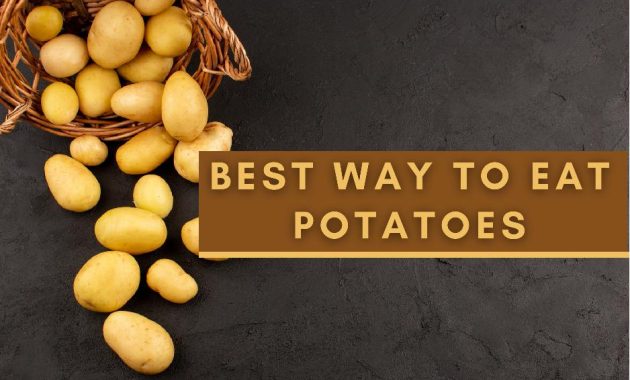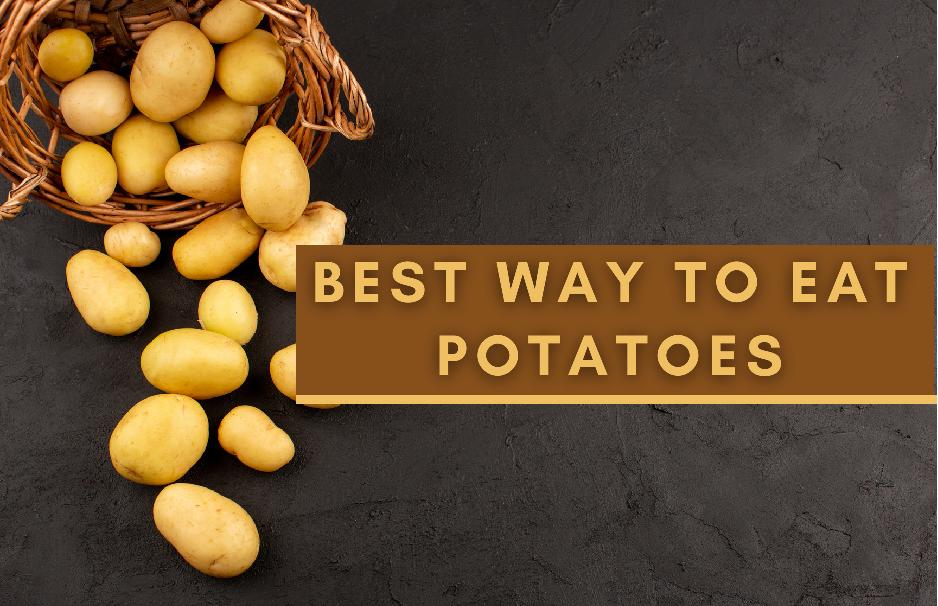
How to Eat Potatoes Without Spiking Diabetes: A Guide to Enjoying a Favorite Food Safely
Potatoes. The humble spud. A staple in countless cuisines around the world. Delicious, versatile, and often… a source of anxiety for those managing diabetes. The high carbohydrate content of potatoes can lead to significant blood sugar spikes, making them a food that diabetics often approach with caution. But does this mean you have to completely banish potatoes from your diet? Absolutely not. This article will delve into how to eat potatoes without spiking diabetes, offering practical strategies and insights to help you enjoy this beloved food while maintaining stable blood sugar levels.
Understanding the Potato and Its Impact
Before we dive into the ‘how,’ let’s understand the ‘why.’ Potatoes are primarily composed of carbohydrates, mainly starch. When digested, starch breaks down into glucose, which enters the bloodstream. This process triggers the release of insulin, a hormone that helps glucose move from the blood into cells for energy. For individuals with diabetes, this process can be disrupted. Either the body doesn’t produce enough insulin (Type 1 diabetes) or the cells become resistant to insulin (Type 2 diabetes). The result is elevated blood sugar levels, which can lead to various health complications over time.
The glycemic index (GI) and glycemic load (GL) are crucial tools for understanding how different foods affect blood sugar. The GI ranks foods based on how quickly they raise blood sugar levels compared to pure glucose (which has a GI of 100). Potatoes have a relatively high GI, meaning they can cause a rapid rise in blood sugar. However, the GI is just one piece of the puzzle. The GL takes into account the portion size, providing a more realistic picture of a food’s impact. While potatoes have a high GI, the way you prepare and combine them with other foods can significantly influence their GL.
Preparation Matters: Cooking Methods and Their Effects
The way you cook potatoes dramatically affects their impact on blood sugar. Here’s a breakdown of different cooking methods and their implications:
- Boiling: Boiling potatoes tends to result in a slightly lower GI compared to other methods. However, it still leads to a moderate blood sugar response.
- Baking: Baking potatoes concentrates their starches, leading to a higher GI and potentially a more significant blood sugar spike.
- Frying: Frying potatoes, especially in oil, can increase their calorie content and may slightly affect the GI. The added fats can slow down digestion, but this is not always a desirable effect.
- Mashing: Mashing potatoes breaks down the cell walls, making the starch more accessible for digestion. This can lead to a quicker and more pronounced blood sugar response.
The key takeaway is that preparation methods influence how quickly the starches are broken down and absorbed. Choosing methods that slow down digestion can help manage blood sugar levels. One effective strategy is to boil potatoes and then cool them before eating. This process, known as retrogradation, converts some of the starch into resistant starch, which the body digests more slowly.
Portion Control: The Foundation of Potato Consumption
No matter the preparation method, portion control is paramount when it comes to how to eat potatoes without spiking diabetes. Even if you choose the healthiest cooking method, overeating potatoes can still lead to a blood sugar surge. Start by measuring your portions. A reasonable serving size for someone with diabetes might be half a cup to one cup of cooked potatoes. This can vary based on individual needs, activity levels, and other dietary factors. Consulting a registered dietitian or certified diabetes educator is essential to determine your ideal portion size.
Consider the overall carbohydrate content of your meal. If you’re having potatoes, reduce the amount of other carbohydrate-rich foods, such as bread, rice, or pasta. This helps to balance the carbohydrate load and prevent excessive blood sugar fluctuations. Paying attention to your body’s signals is also crucial. Monitor your blood sugar levels before and after eating potatoes to understand how your body responds. This will help you fine-tune your portion sizes and preparation methods.
Pairing Potatoes Strategically: The Power of Combination
What you eat with your potatoes is just as important as the potatoes themselves. Combining potatoes with other foods can significantly influence their impact on blood sugar. Here are some effective pairing strategies:
- Protein: Protein slows down the digestion of carbohydrates, leading to a slower and more gradual rise in blood sugar. Include a source of protein, such as lean meat, fish, eggs, or beans, with your potato meal.
- Healthy Fats: Similar to protein, healthy fats also slow down digestion. Add healthy fats like olive oil, avocado, nuts, or seeds to your potato dish.
- Fiber: Fiber slows down the absorption of glucose. Choose fiber-rich toppings and sides like non-starchy vegetables (broccoli, spinach, green beans), or a side salad.
- Vinegar or Lemon Juice: Vinegar and lemon juice can help improve insulin sensitivity and reduce blood sugar spikes. Drizzle your potatoes with vinegar or lemon juice.
By combining potatoes with protein, healthy fats, and fiber, you can create a more balanced meal that minimizes the impact on blood sugar. For example, instead of a plain baked potato, try a baked potato topped with grilled chicken, steamed broccoli, and a drizzle of olive oil.
Choosing the Right Potato: Varieties and Considerations
Not all potatoes are created equal. Different varieties have slightly different GI values and nutritional profiles. Here’s a brief overview:
- Russet Potatoes: These are the most common type and have a relatively high GI.
- Red Potatoes: Red potatoes tend to have a slightly lower GI than russets.
- New Potatoes: These are young potatoes, harvested before they fully mature. They often have a slightly lower GI.
- Sweet Potatoes: While often grouped with potatoes, sweet potatoes have a lower GI than most potato varieties and offer additional nutritional benefits. However, they still contain carbohydrates and should be consumed in moderation.
While the differences between potato varieties are relatively small, choosing a variety with a slightly lower GI can be beneficial. Consider experimenting with different types to see how your body responds. Remember that the overall meal composition and preparation method are more critical factors than the specific potato variety.
Monitoring and Adjusting: Personalized Strategies for Success
The best approach to how to eat potatoes without spiking diabetes is a personalized one. There is no one-size-fits-all solution. Monitoring your blood sugar levels before and after eating potatoes is crucial to understanding how your body responds. Use a blood glucose meter to track your readings and identify patterns. Keep a food diary to record your meals, portion sizes, and blood sugar levels. This will help you identify which preparation methods, pairings, and portion sizes work best for you.
Consulting with a healthcare professional, such as a registered dietitian or certified diabetes educator, is highly recommended. They can provide personalized guidance based on your individual needs and health status. They can help you create a meal plan that includes potatoes in a way that is safe and enjoyable. They can also help you adjust your medications and lifestyle choices as needed. Remember, managing diabetes is an ongoing process that requires consistent effort and attention.
How to eat potatoes without spiking diabetes is achievable with the right knowledge and strategies. By understanding the impact of potatoes on blood sugar, choosing appropriate preparation methods, practicing portion control, and pairing them with other foods strategically, you can enjoy potatoes as part of a healthy eating plan. Monitoring your blood sugar levels, consulting with a healthcare professional, and making adjustments as needed are essential for long-term success. Embrace the flexibility and find what works best for you. Enjoying potatoes is possible, even with diabetes.
Additional Tips for Enjoying Potatoes Safely
- Consider the timing: Eat potatoes earlier in the day to allow for more activity and glucose utilization.
- Stay active: Exercise after eating potatoes to help your body use the glucose.
- Choose whole potatoes over processed forms: Avoid mashed potatoes, potato chips, and french fries, which often have added ingredients and unhealthy fats.
- Explore creative recipes: Experiment with recipes that incorporate potatoes in a healthy way, such as potato salad with a vinaigrette dressing or roasted potatoes with herbs and spices.
Incorporating these tips into your routine will help ensure you can continue enjoying potatoes in moderation.
The journey of how to eat potatoes without spiking diabetes is a journey of empowerment. It’s about making informed choices, understanding your body, and finding a sustainable way to enjoy the foods you love. With careful planning and consistent effort, you can savor the taste of potatoes while maintaining your health and well-being. It is about balance, knowledge, and a commitment to your health.
This article provides a comprehensive guide on how to eat potatoes without spiking diabetes. It emphasizes the importance of preparation, portion control, and pairing techniques. Always consult with your doctor or a certified diabetes educator before making any changes to your diet.
[See also: Related Article Titles]

